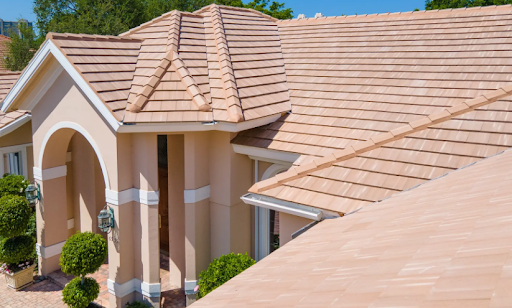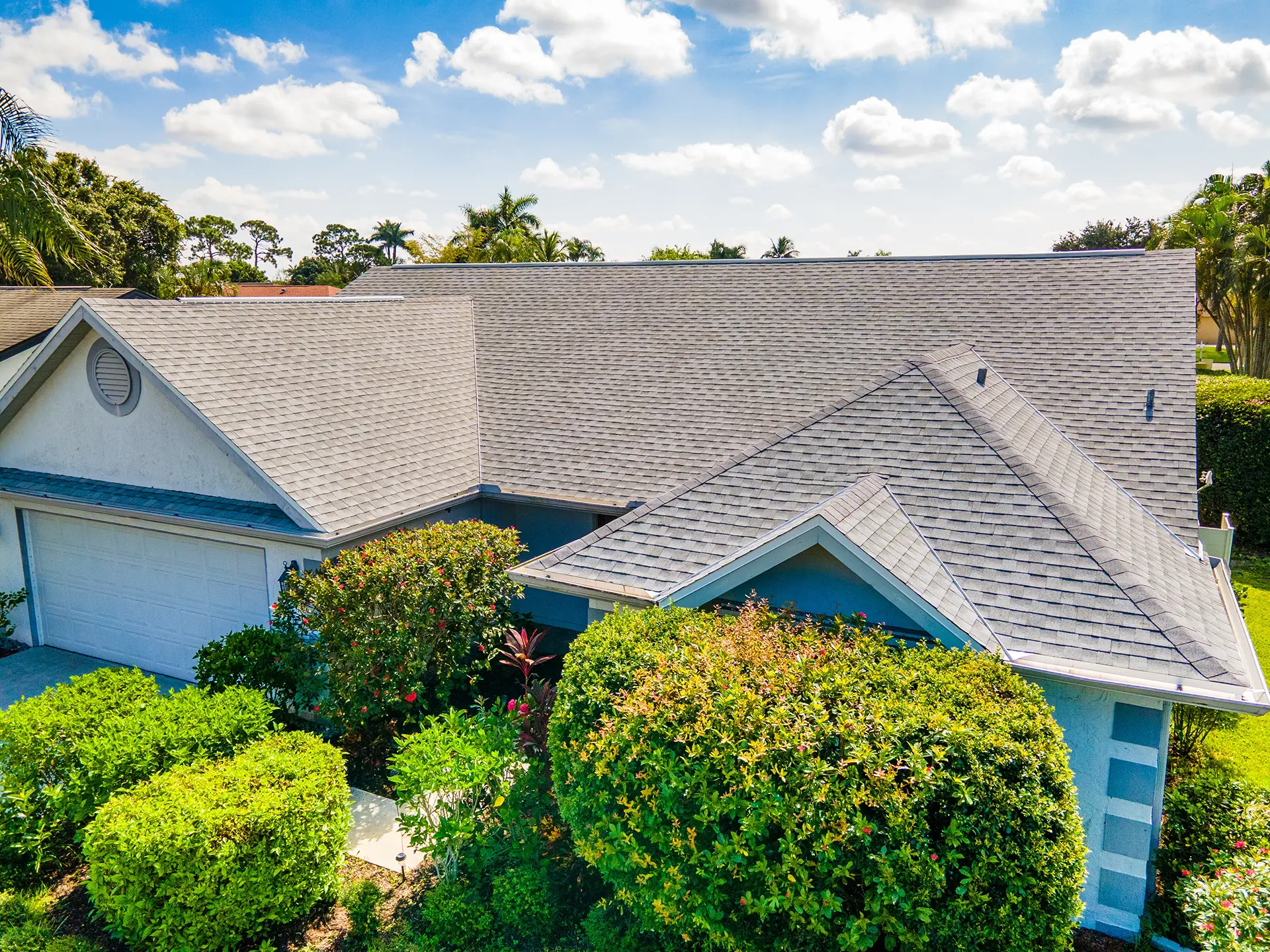Roof Repair vs New Roof Replacement: 7 Things to Consider

When you notice a roof leak, cracked shingles, or loose metal edges around vents or chimneys, you face a common question: should you opt for a roof repair or a full roof replacement? It’s an important decision. A well-timed repair can protect your home and save you money. However, waiting too long could lead to more damage, higher costs, or even structural issues. On the flip side, replacing your roof too early might not be necessary if a repair will do the job.
This article will help you decide when to repair or replace your roof. We’ll walk through how to check your roof’s condition, explain what each option involves, and break down the key things to think about, like cost, roof age, hidden damage, and energy savings. You’ll also learn how weather and timing play a role. With these seven main factors, you’ll be better prepared to make a smart call for your home and your budget.
1. Age of the Roof & Expected Lifespan
As your roof gets older, it becomes more prone to leaks, cracks, and general wear. The expected lifespan of your roofing material is one of the first things to consider. If your roof still has several good years left, a repair might be fine. However, if it’s nearing the end, replacement could save money in the long run.
When to Repair:
- Your Roof is under 15 years old: Most roofing materials still have several years of life left with proper maintenance.
- Damage is minor or isolated: A few broken shingles or lifted edges can often be fixed without full replacement.
- Your Roof is still under warranty: Repairs may be covered by your manufacturer or contractor warranty, thus saving you money.
When to Replace:
- Your roof is 20+ years old: Even if it looks fine, internal wear may cause leaks or energy loss.
- Frequent patching needed: Multiple repairs in a short time show the roof is worsening.
- Warranty expired: Older roofs without coverage are often more cost-effective to replace than to continuously repair.
2. Extent and Type of Damage
Small and localized problems are easy to repair. However, when the damage spreads across multiple sections or the roof’s structure is compromised, replacement becomes the safer choice.
When to Repair:
- Damage affects less than 20% of the roof surface: Targeted repairs can restore functionality and appearance.
- The deck and underlayment are solid: If what’s underneath your roof is still strong, the surface can be fixed easily.
- Leaks are new or small: Quick patching prevents the problem from spreading further.
When to Replace:
- Widespread or recurring leaks: These suggest long-term damage beneath the roof surface.
- Sagging or soft spots in the decking: A structural issue that often requires a full rebuild.
- Storm damage throughout: Wind, hail, or hurricane damage across large sections calls for full replacement.
3. Costs and Long-Term Value
Repairing may seem cheaper upfront, but it’s important to look at long-term costs. Sometimes, paying more once for a new roof is more cost-efficient than constant small fixes.
When to Repair:
- Minor, one-time fix needed: Cheaper and effective if the rest of the roof is in good condition.
- You’re planning a replacement soon: Repairing buys time until you’re ready for a larger project.
- Your budget is limited for now: Repairs can temporarily extend roof life while you prepare financially for replacement.
When to Replace:
- Repair costs are more expensive than installing a new roof: At this point, replacement gives better long-term value.
- You’ve had several repairs in recent years: Frequent fixes add up and rarely solve root problems.
- Energy bills are rising: A new roof can provide savings through improved insulation and ventilation.
4. Hidden Problems and Inspection Findings
Inspections can reveal issues you can’t see from the ground. Hidden moisture, wood rot, or pest damage may influence your next steps.
When to Repair:
- Inspections find surface-level damage: If the structure of the titles is strong, repairs will be enough.
- Moisture damage is minor: Quick sealing and patching can stop it from spreading.
- Roof has no structural decay: A strong base means you can repair rather than replace.
When to Replace:
- Rot or mold beneath shingles: Hidden moisture damage spreads fast and weakens the structure.
- Pest or termite activity in the roof deck: Often requires removing and rebuilding affected sections.
- Long-term leaks with unseen damage: Replacement ensures all damaged materials are addressed.
5. Energy Efficiency
Older roofs often lack reflective coatings or proper insulation, which can raise energy costs. Newer materials are designed to improve airflow and reflect sunlight.
When to Repair:
- Small leaks or gaps affecting airflow: Fixing them can restore normal insulation performance.
- Your Roof already has a reflective coating: A minor repair can keep the system efficient without replacement.
- Insulation is still effective: If your attic and ventilation are performing well, repairs are often enough.
When to Replace:
- Outdated roofing material: Older shingles trap heat and reduce home comfort.
- Noticeable temperature swings indoors: Poor insulation often signals it’s time for a full replacement.
- You want eco-friendly materials: Metal, tile, and cool-roof systems can greatly reduce energy costs.
6. Curb Appeal and Resale Value
Your roof makes up nearly half of your home’s exterior. Its condition directly affects how your property looks and what buyers are willing to pay.
When to Repair:
- Minor cosmetic damage: Fixing small issues maintains your home’s appearance without breaking the bank.
- Damage is limited to unseen areas: If it’s not visible from the curb, repair can suffice.
- You plan to repaint or clean the roof soon: This can restore its look without replacement.
When to Replace:
- Roof looks old or patchy: A mismatched or faded roof can hurt your home’s value.
- You’re preparing to sell: New roofs often recoup most of their cost in resale value.
- You want to refresh your home’s look: Modern roofing options can dramatically improve curb appeal.
7. Timing, Weather Risks & Urgency
Timing your project right can prevent serious water damage and save money. Weather and urgency both influence whether repair or replacement is best.
When to Repair:
- Storm season is near: Quick repairs can prevent leaks and further damage before severe weather hits.
- Small leaks appear during heavy rain: Fixing them early can avoid widespread water intrusion.
- You need an immediate solution: Temporary repairs can buy time before scheduling a full replacement.
When to Replace:
- Your roof may not make it through another storm season: If you’re already seeing cracks, leaks, or loose shingles, it’s a sign the roof is wearing out and could fail soon.
- The weather forecast allows time for work: Dry months are ideal for a full installation.
- You want to avoid emergency repairs later: Proactive replacement reduces future risk and stress.
Making the Decision: Repair or Replace?

Here’s a quick summary to help you decide:
- Choose repair when the damage is limited, the roof is relatively young, the underlying structure is sound, and you won’t stay long or want to keep costs low.
- Choose replacement when the roof is aging, damage is widespread, repair costs are recurring or high, and you care about long‑term value and performance. Always have an expert inspection and a clear estimate before you commit.
Why Homeowners Trust King Roofing
Choosing between a roof repair and a full replacement is a big decision. You need a contractor you can rely on who gives you honest advice and no sales pressure. That’s where King Roofing comes in.
Here’s what sets us apart:
- Over 45 Years of Local Experience: We’ve served Florida communities for decades, and we know how to handle everything from hurricanes to heatwaves. This deep knowledge helps us deliver smart and lasting solutions.
- Clear, Honest Quotes: We don’t use pushy sales tactics or surprise fees. You’ll get a straightforward estimate, and we’ll explain your options without the pressure.
- Licensed, Insured, and Reliable: Our team meets all Florida licensing requirements and carries full insurance. You get peace of mind knowing your home is in trusted, qualified hands.
- Workmanship Warranty on All Roofs: Every new roof comes backed by our 5-year transferable workmanship warranty. We stand by our work long after the job is done.
- Fast Service, Friendly Team: Whether it’s an emergency or a planned project, we respond quickly. Our crews show up on time, clean up after themselves, and treat your home with care.
If you’re unsure what your roof needs, we’re happy to take a look. We’ll inspect, explain, and help you make the best choice for your home and budget.
Ready to make your Decision?
Choosing between roof repair and roof replacement isn’t always straightforward. The right choice depends on your roof’s condition, your budget, the age of your roof, and how long you plan to stay in your home. Small leaks or minor damage might only need a simple repair, but if your roof is older or showing widespread issues, investing in a replacement could save you money and stress long term.
No matter what you’re facing, King Roofing is here to help. We’ve served Florida homeowners with quality workmanship and a commitment to doing the job right. Whether it’s time for a patch or a full replacement, contact us today to schedule your free roof inspection.











